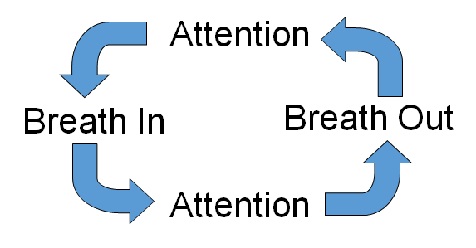Face the challenges of life
Elicitation of the relaxation response is not merely the passage of time by the passive and the unambitious; on the contrary, it is for those who actively want to face the challenges posed by an achieving and ambitious life.
‘Fight or flight’ mode of living is a significant implication of the perception of our finitude in our everyday life. This mode has a tendency to rob us of our ability to think. We behave reactively with little or no consideration. Unconsidered reactive behaviour makes us unable to face the challenge.
Confronted with the inability of facing the challenge ahead of us, we feel unhappy, worried, anxious, depressed, and angry. Overcome with such negative emotions makes disables our ability think and strategize to face the challenge. Feeling of helplessness overtakes us. Helplessness in facing the challenge worsens the initial senses of finitude setting in place a vicious circle of negative emotions making us progressively lesser able to deal with the challenge.
With a regular practice of eliciting relaxation response, we become resilient the onset of the ‘fight or flight’ mode. We then are more likely to think and behave with due consideration strategizing to face the challenge head on.
|
This figure shows two important human brain components of the human brain: (a) shows the limbic brain which incudes the brain stem on the top of the spine and some neighboring neural tissues and (b) is the neocortex underneath the skull. The nervous system connects directly to the limbic brain making it the first to receive the sensory signals from the nervous system. The limbic brain is positioned thus to react to the autonomic and time sensitive survival issues of the body-mind. The neocortex, on the other hand, is positioned in the second place to receive its sensory stimuli from the nervous system. It deals with non-urgent issues of life with the luxury of time to consider and then response to the stimuli. Itis input thus is easily ignored by those of us who live our lives emotionally and reactively characteristic of "fight or flight" moe in which all stimuli demand urgent response. |
With regular elicitation of the relaxation response calms the activity of the emotion related limbic brain giving the slow acting thinking neocortex part of the brain a chance to do its part. As a result you live your lives with appropriate consideration. As a result;
- Everyone gets physically healthier and prevents/cures disease;
- Everyone gets mentally healthier, happier and prevents/cures mental disorder;
- Students become more disciplined and better student learners;
- Sportsmen become better at their sports;
- Everyone stays calm and centered;
- Everyone becomes more creative;
- Everyone performs better under pressure;
- Workplace becomes harmonious, coherent, happier, healthier with increased team spirit, reduced absenteeism and higher profitability;
- Family life becomes harmonious, coherent, happier and healthier;
- Community life becomes more engaged, better behaved, prosperous with reduced poverty, better physical and mental health, reduced incidence of crime, higher involvement and higher sense of belonging to the community;
- and so on.


